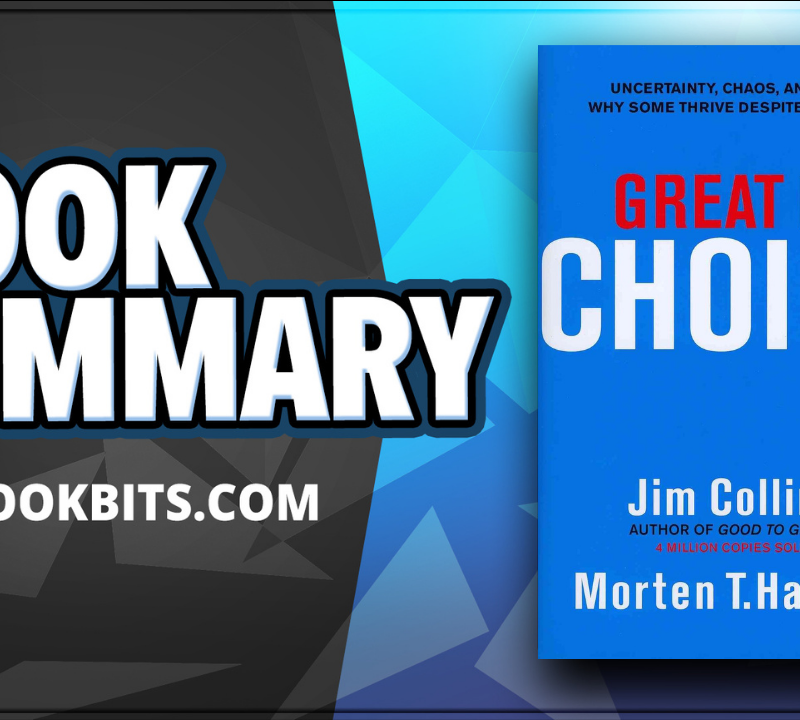★DOWNLOAD THIS FREE PDF SUMMARY HERE
? MY FREE BOOK TO LIVING YOUR DREAM LIFE”
? SPONSOR BESTBOOKBITS BY USING PATREON
? SUPPORT BESTBOOKBITS BY CLICKING THE LINKS BELOW
- 150 PDF Summaries
- Coaching Program
- Subscribe to My Channel
- Website
- Spotify
- Book Club
- Mailing List
- Conventional wisdom is not to put all your eggs in one basket. 80/20 wisdom is to choose a basket carefully, load all your eggs into it, and then watch it like a hawk.
- Celebrate exceptional productivity, rather than raise average efforts
- Look for the short cut, rather than run the full course
- Be selective, not exhaustive
- Strive for excellence in few things, rather than good performance in many
- Delegate or outsource as much as possible in our daily lives and be encouraged rather than penalised by tax systems to do this (use specialists to the maximum instead of doing the work ourselves)
- Only do the thing we are best at doing and enjoy most
- In every important sphere, work out where 20% of effort can lead to 80% of returns
- Creative systems operate away from equilibrium. Cause and effect, input and output, operate in a non-linear way. You do not usually get back what you put in; you may sometimes get very much less and sometimes get very much more.
- If you can identify where your firm is getting back more than it is putting in, you can up the stakes and make a killing. Similarly, if you can work out where your firm is getting back much less than it is investing, you can cut your losses.
Segmentation is the key to driving up profitability.
- A competitive segment is a part of your business where you face a different competitor or different competitive dynamics.
- Take any part of your business that comes to mind: a product, a customer, a product line sold to a customer type, or any other split that may be important to you, and ask these questions:
- Do you face a different main competitor in this part of your business compared to the rest of it?
- Do you and your competitor have the same ratio of sales or market share in the two areas, or are they relatively stronger in one area and you relatively stronger in another? Observe to determine the balance of advantage being different in the two areas. They are therefore separate segments and will probably exhibit different profitability
Simple is beautiful, complex is ugly
- Why is it that larger firms lose market share to smaller firms? Why is it that the theoretical advantages of scale and market share fail to translate into higher profits in reality?
- Because of the cost of complexity. The problem is not extra scale, but extra complexity. Additional scale, without additional complexity, will always give lower unit costs. Yet additional scale is rarely just more of the same. The extra volume usually comes from adapting an existing product, providing a new product and/or adding more service. This requires expensive overhead costs that are usually hidden.
- Complexity slows down simple systems and requires the intervention of mangers to deal with new requirements. The cost of stopping and starting again, of communication and miscommunication between extra people and cost of gaps between people when partially completed work is set down to await someone else’s intervention and later picked up and passed on into another gap. The scale curve “additional volume equals lower costs” doesn’t work. The scale curve operates, but its benefits are overturned by the extra complexity.
- Winners sell a narrow range of products to fewer customers and also have fewer suppliers. Simple organisation is best at selling complicated products.
- Outsourcing is a terrific way to cut complexity and costs. The best approach is to decide which is the part of the value-adding chain where your company has the greatest comparative advantage and then ruthlessly outsource everything else.
- The key problem with head offices is not their cost. It is the way they take away real responsibility and initiative from those who do the work and add the value to customers.
- Harvest the less profitable segments by deliberately losing market share. Let go of the less profitable customers and products, cut off most support and sales effort, raise prices and allow sales to decline at 5-20 percent while you laugh all the way to the bank.
New Markets, Marketing Led
- All the great breakthroughs from the invention of fire and wheel onward have been triumphs of production that then created their own markets.
- Being marketing led and customer centred is absolutely right, but keep the product range narrow to avoid overhead increases due to extra complexity.
- One common excuse for refusing to cut the product range by 80% is that the firm will “lose stature”. In reality shoppers are not interested in being distracted from the products they want to buy.
- With nationwide branches – concentrate on the best performing 20%. What are they doing right, Could they do more? What do they have in common? You could try and roll out the ideas to the other branches or just cut them loose and find new franchisees.
- Focusing on the top 20% of your customers is both feasible and highly rewarding. Provide them with outrageous service above and beyond the call of duty and out of line with industry standards. May result in short term costs but will have long-term rewards
Decision Making
- Gather 80% of the data and perform 80% of the relevant analyses in the first 20% of time available, then make a decision 100% of the time and act decisively as if you were 100% confident the that decision is right.
Saving Time
- There is no shortage of time. In fact, we are positively awash with it. We only make good use of 20% of our time. For the most talented, tiny amounts of time can make all the difference.
- The 80/20 principle says that if we doubled our time on the top 20% of activities, we could work a 2 day week and achieve 60% more than now.
- Contemporary time management says “do more things faster” and doesn’t help the individual to choose the very most important things to do as much as the 80/20 principle
- The 80/20 principle says we should act less. Action drives out thought. It is because we have so much time that we squander it. Productivity on most projects could be doubled simply by halving the amount of time for their completion.
- You can only spend time on high-value activities if you have abandoned low-value activities.
The top 10 low value uses of time:
- Things other people want you to do
- Thing that have always been done this way
- Things you’re not usually good at doing
- Things you don’t enjoy doing
- Things that are always interrupted
- Things few other people are interested in
- Things that have already taken twice as long as you originally expected
- Things where you collaborators are unreliable or low quality
- Things that have a predictable cycle
- Answering the telephone
The top 10 highest value uses of time
- Things that advance your overall purpose in life
- Things you have always wanted to do
- Things already in the 20/80 relationship of time to results
- Innovative ways of doing things that promise to slash the time required and/or multiple the quality of results
- Things other people tell you can’t be done
- Things other people have done successfully in a different arena
- Things that use your own creativity
- Things that you can get other people to do for you with relatively little effort on your part
- Anything with high-quality collaborators who have already transcended the 80/20 rule of time, who use time eccentrically and effectively
- Thing for which it is now or never
10 Golden rules for career success
- Specialise in a very small niche; develop a core skill
- Choose a niche that you enjoy, where you can excel and stand a chance of becoming an acknowledged leader
- Realise that knowledge is power
- Identify your market and your core customers and serve them best
- Identity where 20% of effort gives 80% returns
- Learn from the best
- ‘Become self-employed early in your career
- Employ as many net value creators as possible
- Use outside contractors for everything but your core skill
- Exploit capital leverage
Niche
- Small business, apparently in competition in a broad market, can actually be leaders in their own niches and avoid head-to-head competition.
- For the individual too, it is better to know a few things well, or preferably one thing exceptionally well, than it is to know many things superficially.
- The key to making a career out of an enthusiasm is knowledge. Know more about an area than anybody else does. Then work out a way to marketise it, to create a market and set of loyal customers.
- The employee who used the 80/20 principle properly will probably be many times more effective than the average. The 80/20 employee is most unlikely to be paid several times what his or her peers are. Thy will therefore probably obtain a better deal by becoming self-employed.
- When you are self-employed you get paid by results. For those who use the 80/20 principle, this is good news.
- The one circumstance in which it may not be appropriate to become self-employed yet is when you are still in the rapid learning stage. If a corporation or professional firm is teaching you a great deal, the value of this learning may exceed the differential between the value you add and what you are paid. This is typically the case during the first 2 or 3 years of a professional career.
- Use outside contractors for everything but your core skill
★DOWNLOAD THIS FREE PDF SUMMARY HERE
? MY FREE BOOK TO LIVING YOUR DREAM LIFE”
? SPONSOR BESTBOOKBITS BY USING PATREON
? SUPPORT BESTBOOKBITS BY CLICKING THE LINKS BELOW













